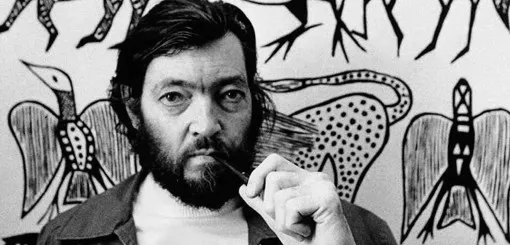Argentina celebrates the 60th anniversary of Rayuela (Hopscotch), the masterpiece by writer Julio Cortázar, which redefined Latin American literature and changed the way of reading a book.
On Rayuela, Olivera, the Maga and Baby Rocamadour take us by the hand through love, heartbreak, and the eternal search for transcendence.
For creating the character of La Maga, Cortázar was inspired by a German-Argentine woman, Edith Arón, a writer he met during his exile in Paris.

The book was published on 28 June 1963, and is still considered to be one of the most ground-breaking and original texts of the second half of the 20th century.
It was translated into more than 30 languages.
Rayuela went down in history by proposing different types of "games" to readers, since those who read it can create their own structure, language and even a playful construction without losing meaning as a result.
Any reading path generates a valid and beautiful story.
It is a text that sells 10,000 copies per year 60 years after its publication.
Clearly its validity is out of the question said Argentine journalist Mariana Iglesias, an expert in Cortázar's work.
Those who dare to play with Rayuela; will be able to find themes such as love, art and music, while exploring the "existentialist relationship" of intellectual Horacio Oliveira and La Maga.
In its own way, this book is many books, but above all it is two books, Cortázar used to say about his work, because he broke the mold by means of a new reading pact.
Rayuela can be read from beginning to end or skipping chapters according to a board .
It is a book that is infinite in each re-reading.
The text highlights the invention of a language shared by lovers, which is interpreted as a game. It features jazz music, one of the writer's great passions, who enjoyed it during his stay in Paris.
Printed by Sudamericana thanks to Spanish publisher Francisco Porrúa, the novel establishes a translation from one space and time line to another, from Buenos Aires to Paris and vice versa.
This book earned its author international recognition, becoming a member of the so-called “Latin American boom”; known also by Colombia’s Gabriel García Márquez and Peru’s Mario Vargas Llosa, and exerted a determining influence in Argentine literature.
Cortázar wrote short stories, poetry, letters, critiques and translations and was a great follower of the other famous Argentine writer, Jorge Luis Borges. He studied philosophy and literature and translated Edgar Allan Poe into Spanish.
Julio Cortázar was born to Argentine parents in Belgium in 1914, but grew up on the outskirts of Buenos Aires, in the town of Banfield.
He went to Paris in 1951 thanks to a scholarship and didn’t ever return to Argentina.
Silvana Avellaneda
Web: Julián Cortez- Pedro Aráoz






